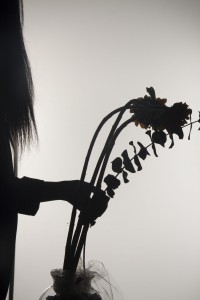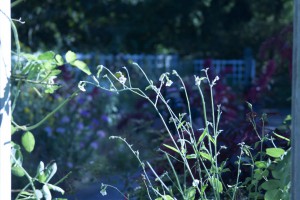Irving Penn, On Assignment:
This Gallery showcased the work that Irving Penn did for Vogue magazine. His work is interesting, having literal subjects to more artistic objects. His beginning work was more black and white, but with his later years his work transitioned into color. The most interesting to me was “Small Trades” shoot. Out of all his other works that one spoke the loudest to me. He took most work-a-day jobs, or blue color men and photographed them, some included a Painter, a firefighter, body builder, and a boxer. These were also black and white; he also incorporated a horizon less background. None of his photos were edited in any software making the skill that much more difficult. The reason this is the appealing to me is because I always see myself as a worker. His work usually incorporates an extensive depth of field and an eyelevel shot, with textures similar to his subject.
Nick Brandt, Across the Ravaged Land:
Across the Ravaged land was another interesting gallery. His photos were black and white and were shot outside, not in a studio, his work was more natural. His subjects included animals, bird’s skeletons and other subjects found naturally. His work had mainly one subject, and a lot of background. Most of his work had a low angle. His one photo of a Lioness just finishing a meal is one of the most interesting photos out of the entire gallery, or trip. Just the face alone on the animal can say thousand words, having the rest can speak another thousand more.
Robert Polidori, Versailles:
Roberts Gallery was the straightest forward out of any seen that day. He is seen more as an architectural photographer. His Photos are very large and are in full color. His photos use extensive depth of field and a lot of deep space. He also uses the most out of perspective lines, using corners, vertical and horizontal lines, and even more texture. Most of his work is in frames and is geometric even though some of his subjects are not in the center, and are off balance.
Susan Derges, New York:
Susan’s gallery was the most complicated to understand; her technique was original to her. She uses exposes her paper directly, similar to photograms but not quite. He captures are in real time and show some blurry motion, in my opinion that is an aesthetic improvement. Her work typically have low contrast, where the main subject is black or darker, mainly silhouettes her work uses water and I want to say that she uses a top angle. She sometimes adds ripples to the water again making it more interesting. Her texture was more similar to liquid and natural environment, such as moon light, branches and leaves.
Olivo Barbieri, Alps Geographies and People:
Barbieri takes photos from a helicopter, the photos were taken from the highest altitude out of all the gallery’s seen that day, along with that they were of mountains and in a few of people climbing them. These were edited in some software. They were taken at a high angle, in full color, and are very large in size. Most do have perspective lines but more importantly have negative space. Out of the entire galleries seen this is my favorite. The reason for this Is because initially walking in to view his work I was on the fence, I was not sure if I was going to connect or be unimpressed, but when I got into his work I saw the correlation to between his work and my style. I came to the judgment that his work would closely resemble mine. In vector and photograph style, clarity, color, size, and most of all the adrenaline rush capturing a moment from a high elevation, and cold temperature.
Phillip Lorca DiCorsia, Hustlers:
Phillips took the most shocking technique. He hired male prostitutes and had them to model for him. Until I was told they were male hookers I was under the impression they were model hired from an agency. His most impressive story telling device was the lighting. He had a variety of color tones and lighting, most of which was natural from the streets of L.A. his shoots were mainly from 1990 to 1992. His composition took a form of solace because there was no more than one subject in any given photo. This effect gave a slight feeling of trust as if you could see and hear the thoughts of model.






